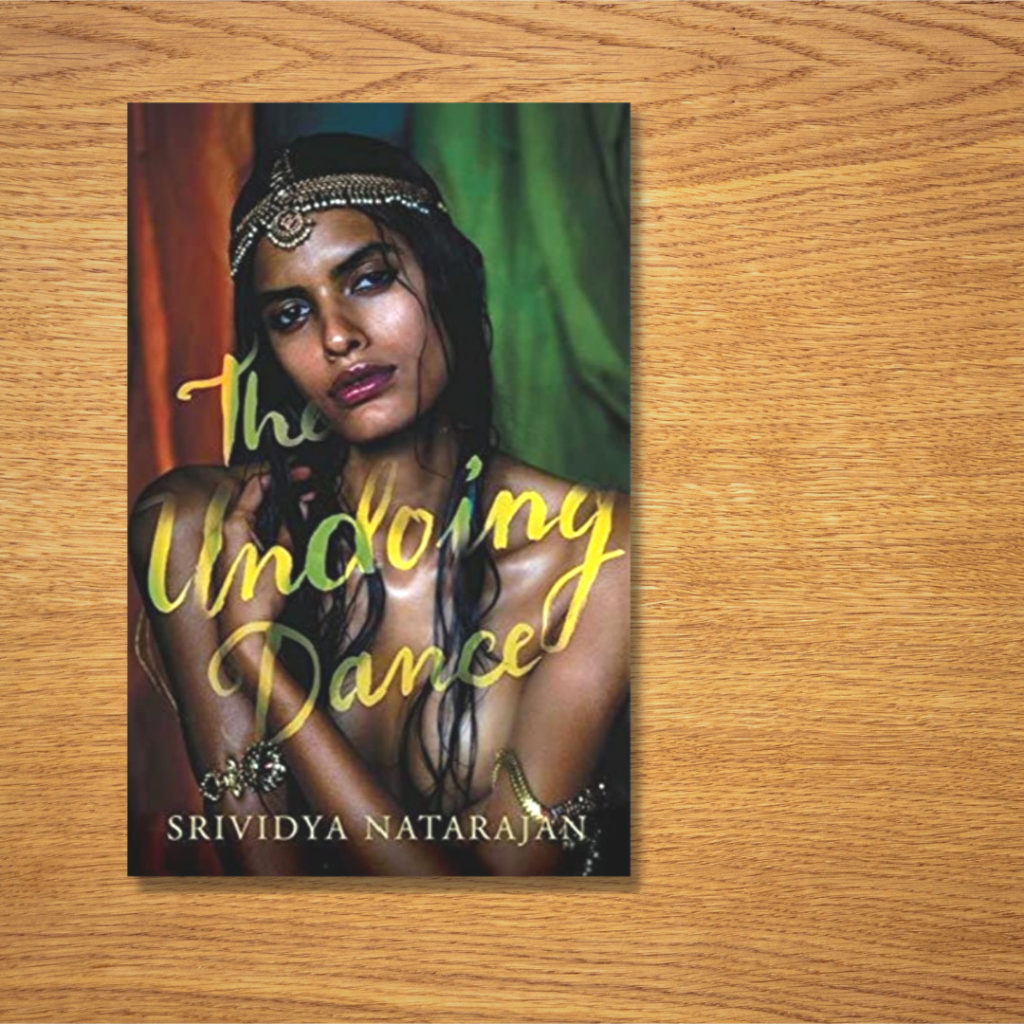
Publishers : Juggernaut.
Srividya Natarajan was the student of the great dance master Kittappa Pillai and of the singer T. Brinda. She has taught and performed classical dance for over thirty years all over the world. Her first novel was a superbly funny satire on caste No Onions Nor Garlic.
Kalyani comes from a lineage of famous devadasis, though there is no place for her talent in the Madras of newly independent India. The devadasis, once celebrated as artists, are shunned as ‘prostitutes’ in a modern country. In exchange for a comfortable life as the wife of a wealthy arts promoter, Kalyani has to keep her origins hidden and abandon her mother, Rajayi. When a Bharatanatyam dancer from the city sets out to record Rajayi’s dance repertoire on film, the carefully wrapped-up past threatens to unravel
A review of The Undoing Dance – Srividya Natarajan’s second novel – refers to her first, No Onions Nor Garlic as “a book that many an Indian reviewer believes they alone have read”. I harbour no such misconception, for I myself had found it on a reading list by The Ladies Finger, the once popular (well, at least in certain circles) feminist webzine that is now sadly defunct.
But I do believe that not enough people read it. Indian writing in English is often starkly divided into two camps – the good stuff is mostly literary fiction with an inclination to take itself somewhat seriously, while the light reads are either just badly written or suffer from jarringly ignorant or bigoted treatments of caste and class. No Onions Nor Garlic is a romantic comedy that also serves as a biting satire of the caste and gender prejudices in an Indian university campus. It is funny, irreverent, bordering on ridiculous but seamlessly executed in effortless prose.
This book is decidedly more sombre than Natarajan’s debut. It talks about the appropriation of the Bharatnatyam dance form by the upper caste elite, robbing the traditional practitioners of their heritage and the art form of its essence. The upper caste tastemakers of newly independent India smoothly inherited the puritanism of their former colonial masters. While these themes might be well known to people with some familiarity with the classical dance and music scene, to the lay person, Bharatnatyam is still a sacred emblem of Indian heritage. The discourse in this book also has the potential to be an eye opener to cultural appropriation in other spheres like folk art and handicrafts – especially at a time when the history and identity of marginalised communities are being obliterated in the quest for a homogeneous national identity, while the traditional arts of these communities are being zealously harvested as symbols of national pride.
Natarajan is herself an experienced Bharatnatyam dancer, and she makes the passion that her characters feel for dance intensely palpable. I have no inclination for or understanding of any dance form whatsoever, but I could feel their passion – it reminded me of the feeling of losing myself in a book like this one. It is not easy to conjure in English prose the vivid images of crumbling houses with moss-laden walls and jasmine plants in their courtyards, of the rythms of ancient songs or the jingle of a temple dancer’s ghungroos, but Natarajan achieves that – without resorting to extravagantly purple prose.
The characters are all fascinating, with an astonishing variety of independent women in one novel – Kalyani’s powerful devdasi ancestors, her proud and resilient mother, her flamboyant aunt, the do-gooder missionary she grows up with, Kalyani herself, the upper caste Bharatnatyam diva who is making a documentary on Kalyani’s mother’s life, Kalyani’s spunky teenage daughter. Most of them are flawed, but deeply human. Their interwoven stories are testament to the ways in which gender interacts with class and caste identities and complicates the struggle against patriarchal oppression. The book features several strong mother-daughter relationships, some of them non-biological. Matrilineal inheritance is centre stage – not just the inheritance of trauma, but of passions, knowledge, and talents.
Unlike the unbridled melodrama of the ending of No Onions Nor Garlic, the ending of The Undoing dance is restrained and solemn, yet hopeful. The writing retains sparks of the wit that had run amok in the earlier book, and makes a lasting impact.
This is not an attempt at writing a balanced review. It is not possible to have a balanced view of books that one has lived in. This is my petition to you, dear reader, to give this book, and the author’s earlier work, a try.

